Seaweeds of the South African South Coast


Order Ceramiales
Family Rhodomelaceae
Ophidocladus simpliciusculus (P.L.Crouan & H.M.Crouan) Falkenberg in Schmitz & Falkenberg 1897: 461
Plants red, growing in turfy clumps or mats up to 20 (-30) mm high, comprising prostrate filaments with erect branches; polysiphonous, ecorticate. Prostrate axes attached by numerous haptera cut off from pericentral cells, apices down-curved. Erect axes arising endogenously from dorsal face of axial cells of prostrate filaments at short intervals, re-branching up to several orders. Segments of prostrate and erect filaments up to 200 µm in diameter, shorter than broad, with 16-20 (-24) pericentral cells. Erect filaments sparsely and irregularly branched, apices with two rows of alternating trichoblasts at intervals of two to several segments. Tetrasporangia two per segment, in two rectilinear series in distal parts of lateral branches; tetrasporiferous branches sometimes crowded, swollen and apparently with reduced number of pericentral cells in tetrasporiferous parts: tetrasporangia up to 80 µm in diameter, with two long cover cells. Antheridial stands trilobed, with monosiphonous sterile apices. Cystocarps globose to ovoid, up to 400 µm in diameter.
Collections, ecology and regional distribution
Recorded from Platboom, just west of Cape Point, to northern Kwazulu-Natal (17-58).
A component of sand-binding turfs in the lower eulittoral, giving the appearance of longish red fur. A possible record from Hondeklipbaai on the South African west coast is discussed by Stegenga et al. (1997).
World distribution: In southern Africa also recorded from Namibia (Rull Lluch 2002) and Mozambique (Silva et al. 1996), otherwise widely recorded from tropical and warm temperate oceans (Guiry & Guiry 2011).
Type locality: Finistère, France (Silva et al. 1996).
Note: Saenger (1971) discusses the occurrence of this species in southern Africa.
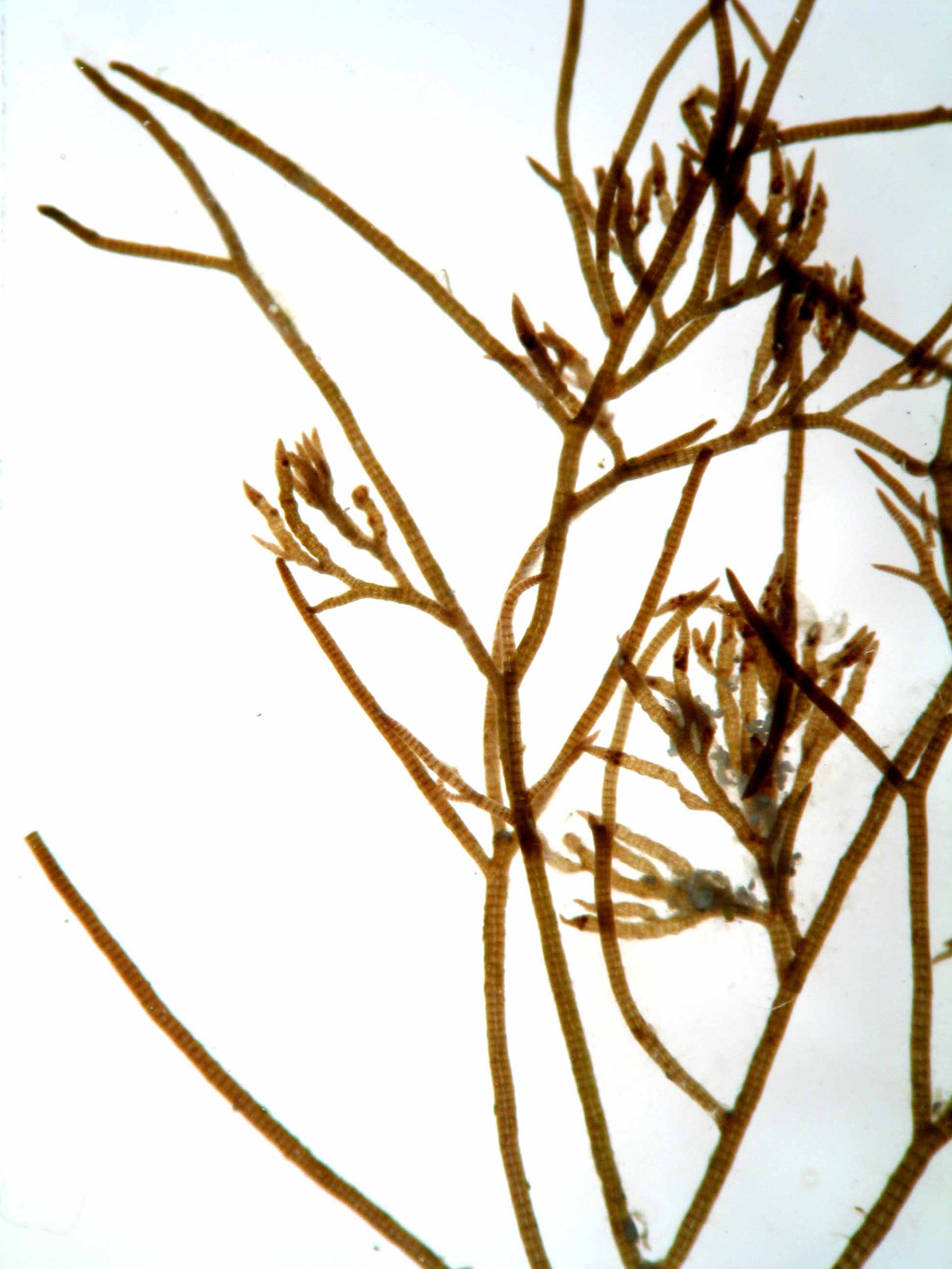
Ophidocladus simpliciusculus.
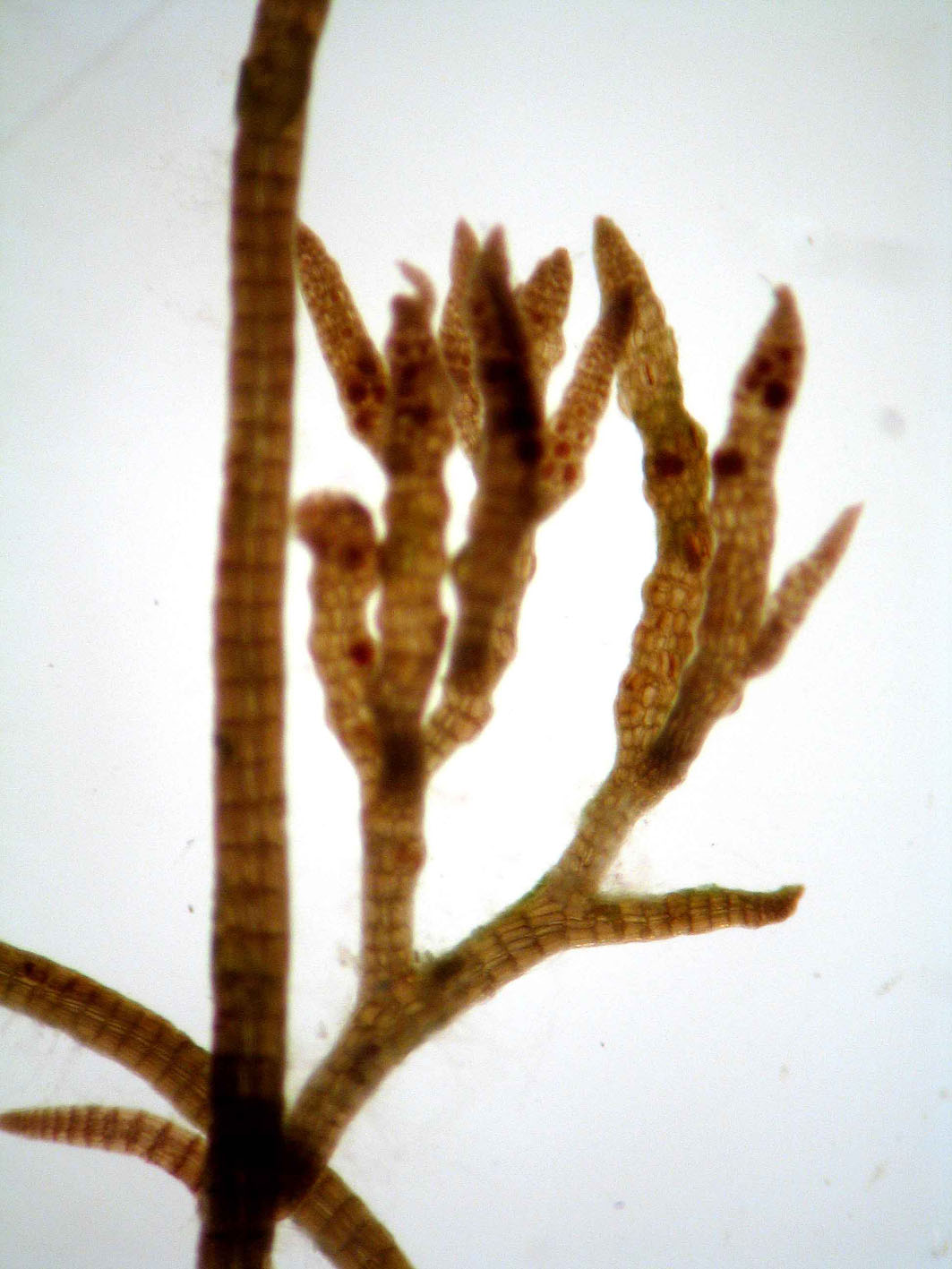
Ophidocladus simpliciusculus, tetrasporangia.
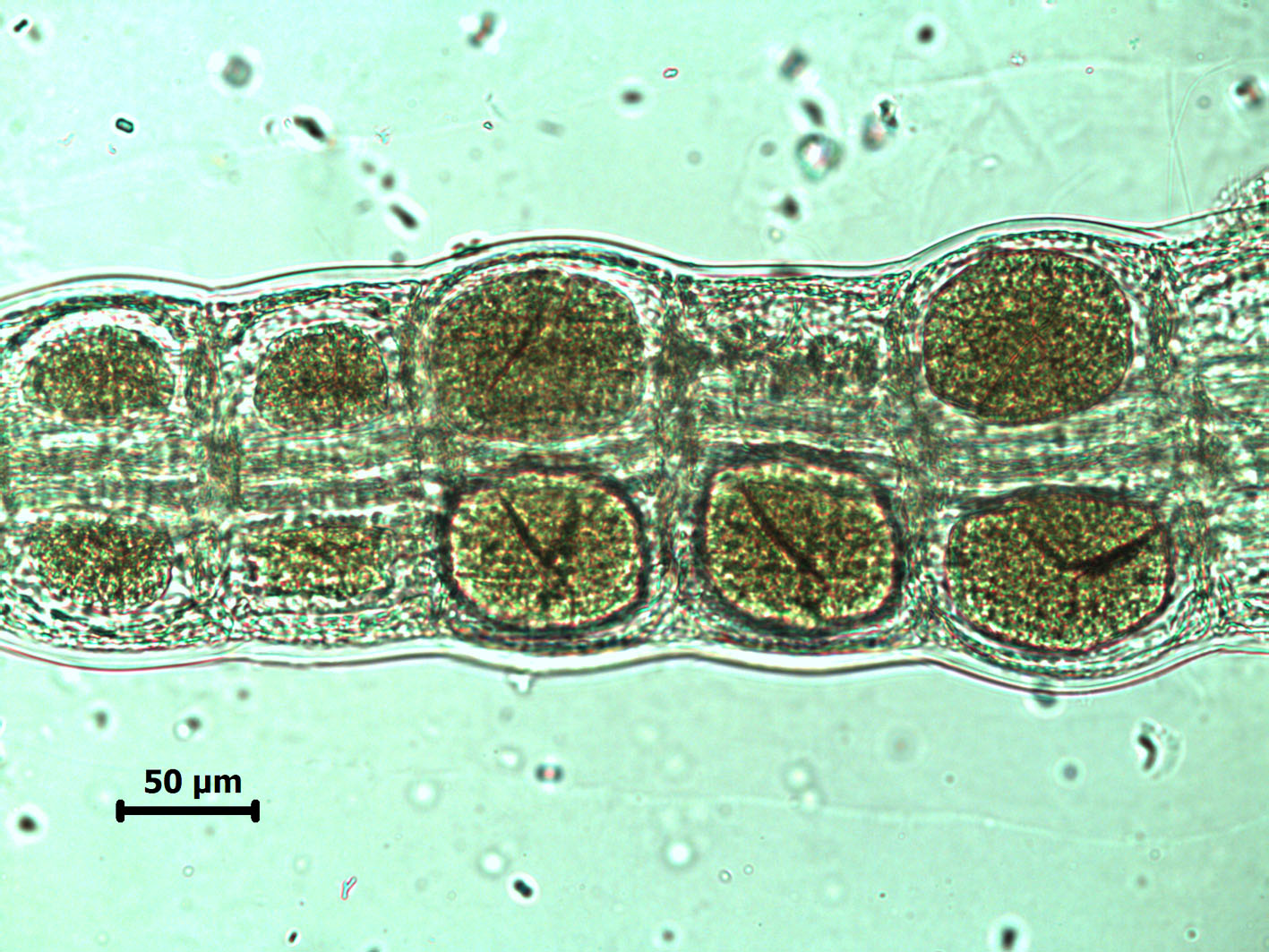
Ophidocladus simpliciusculus, detail of tetrasporangia.
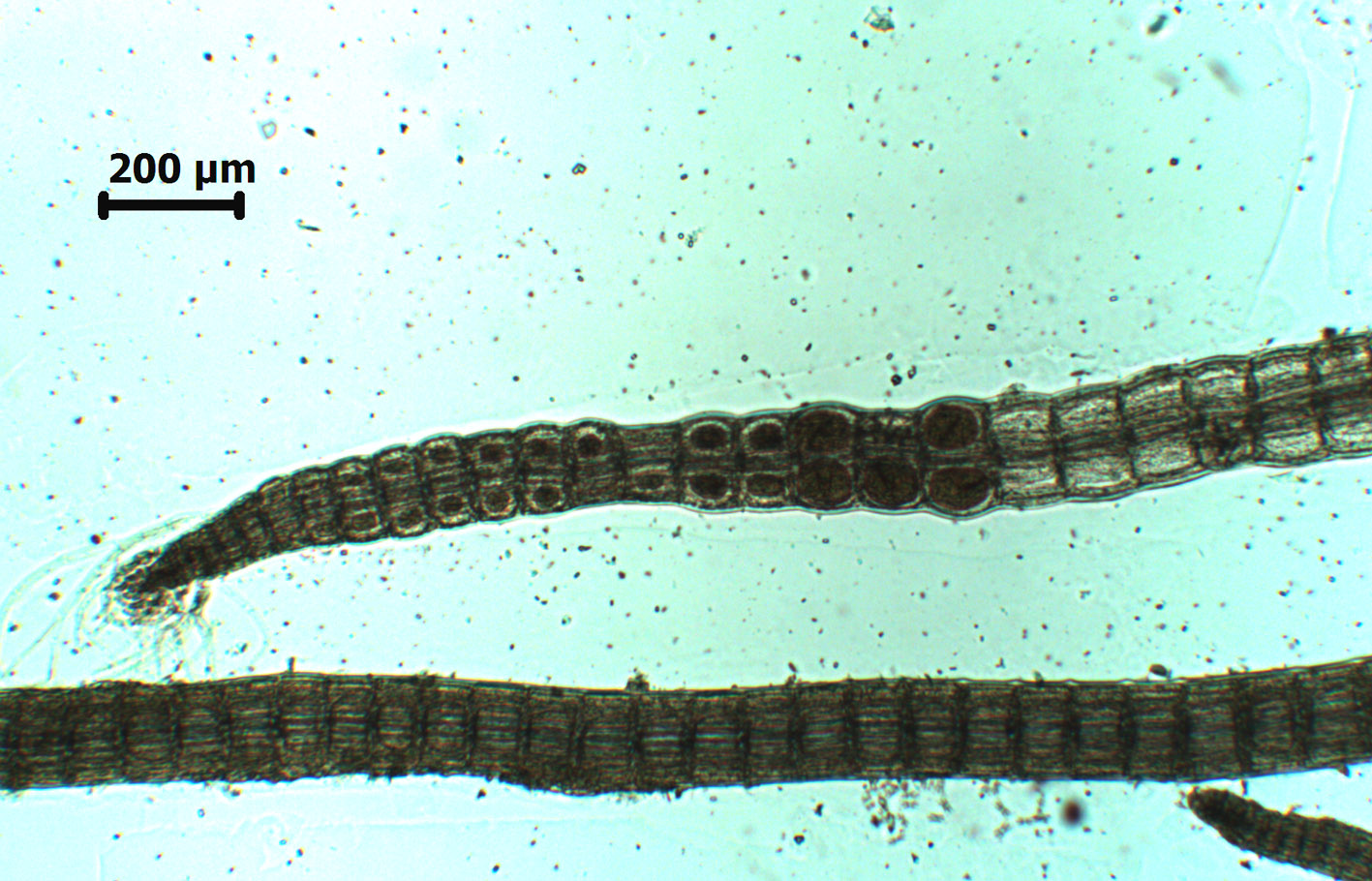
Ophidocladus simpliciusculus, tetrasporangia in rectilinear series.
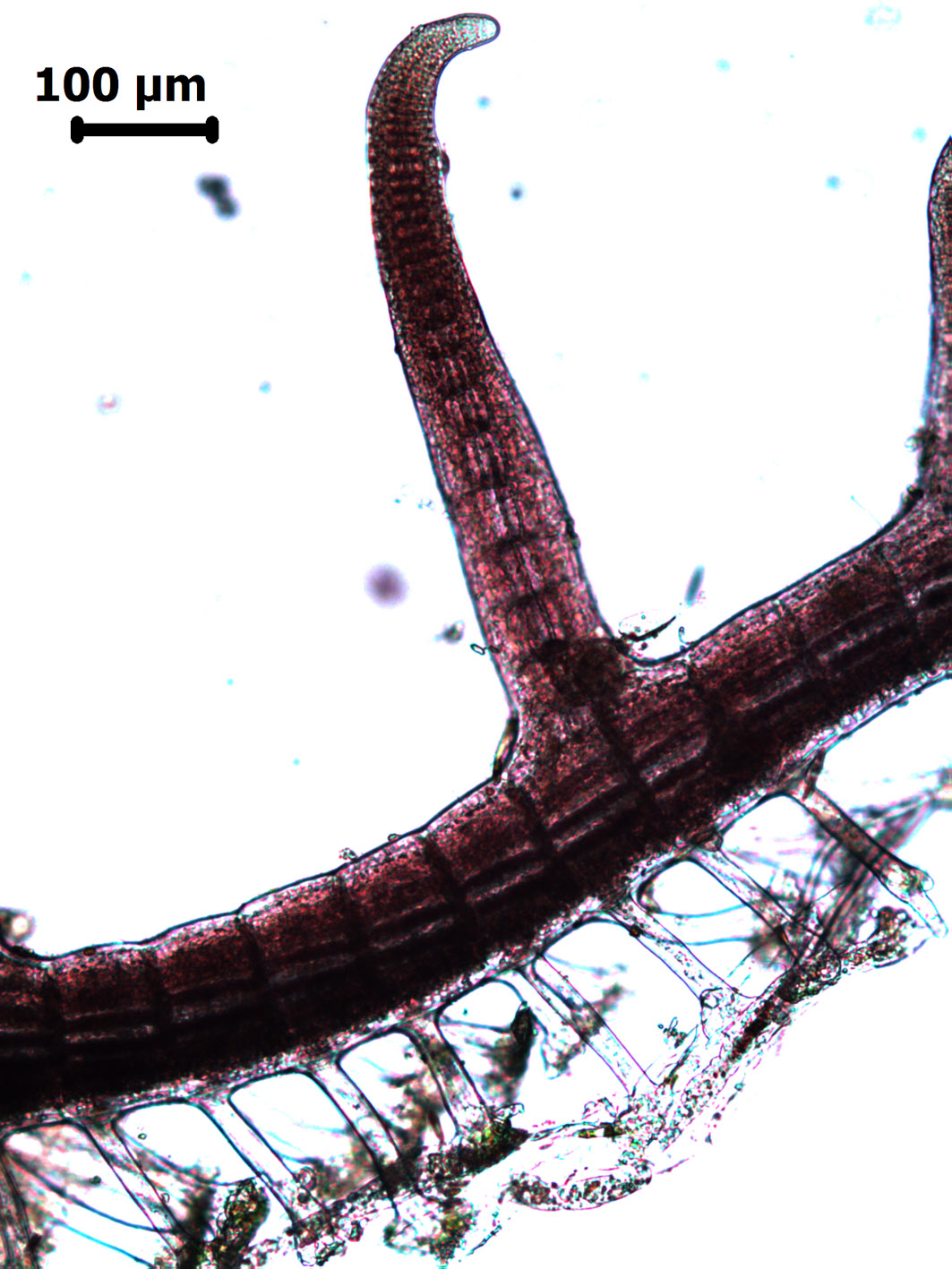
Ophidocladus simpliciusculus, dorsal branch and ventral rhizoids, fresh specimen, Nature’s Valley.
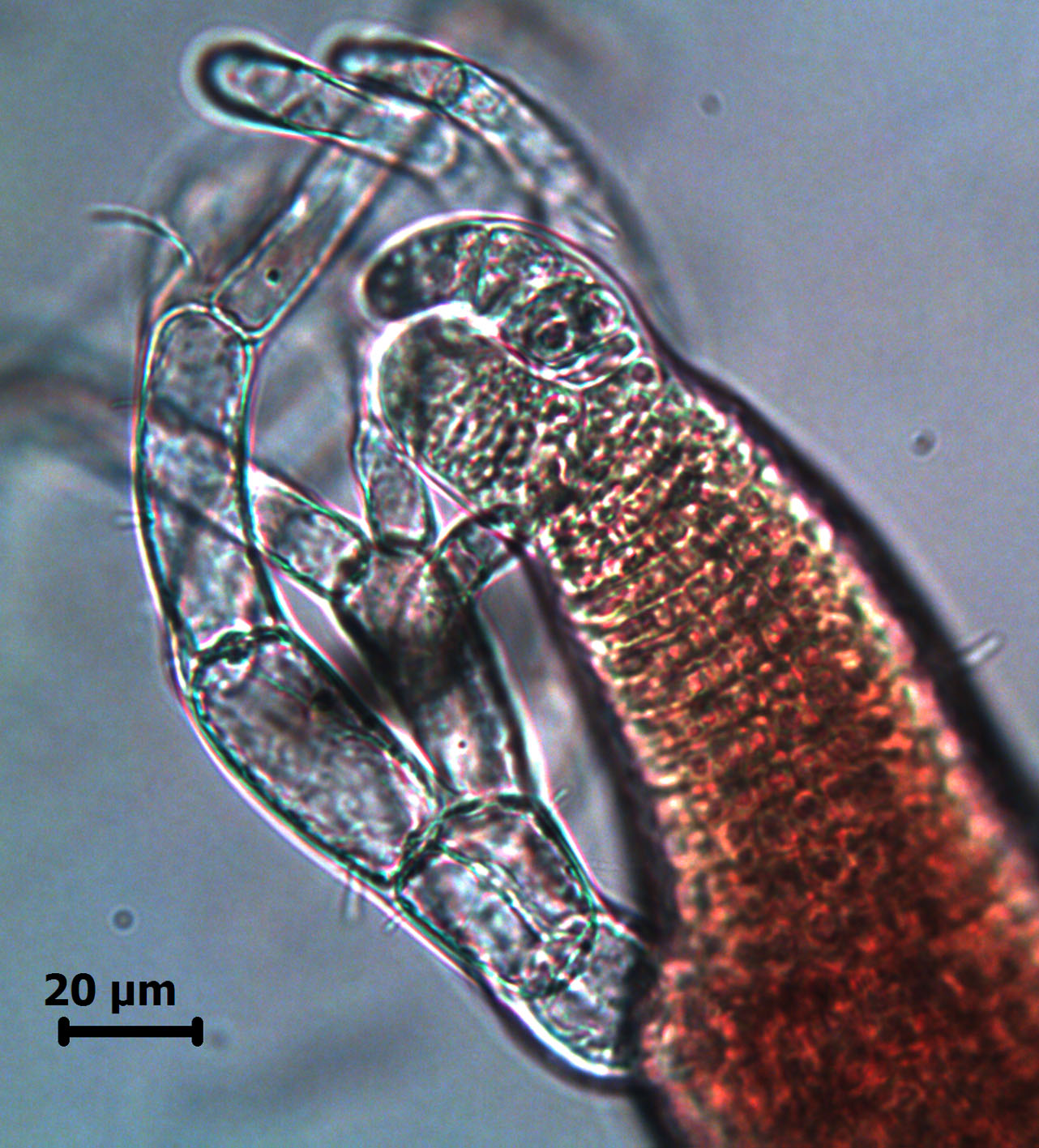
Ophidocladus simpliciusculus, trichoblasts, fresh specimen, Nature’s Valley.
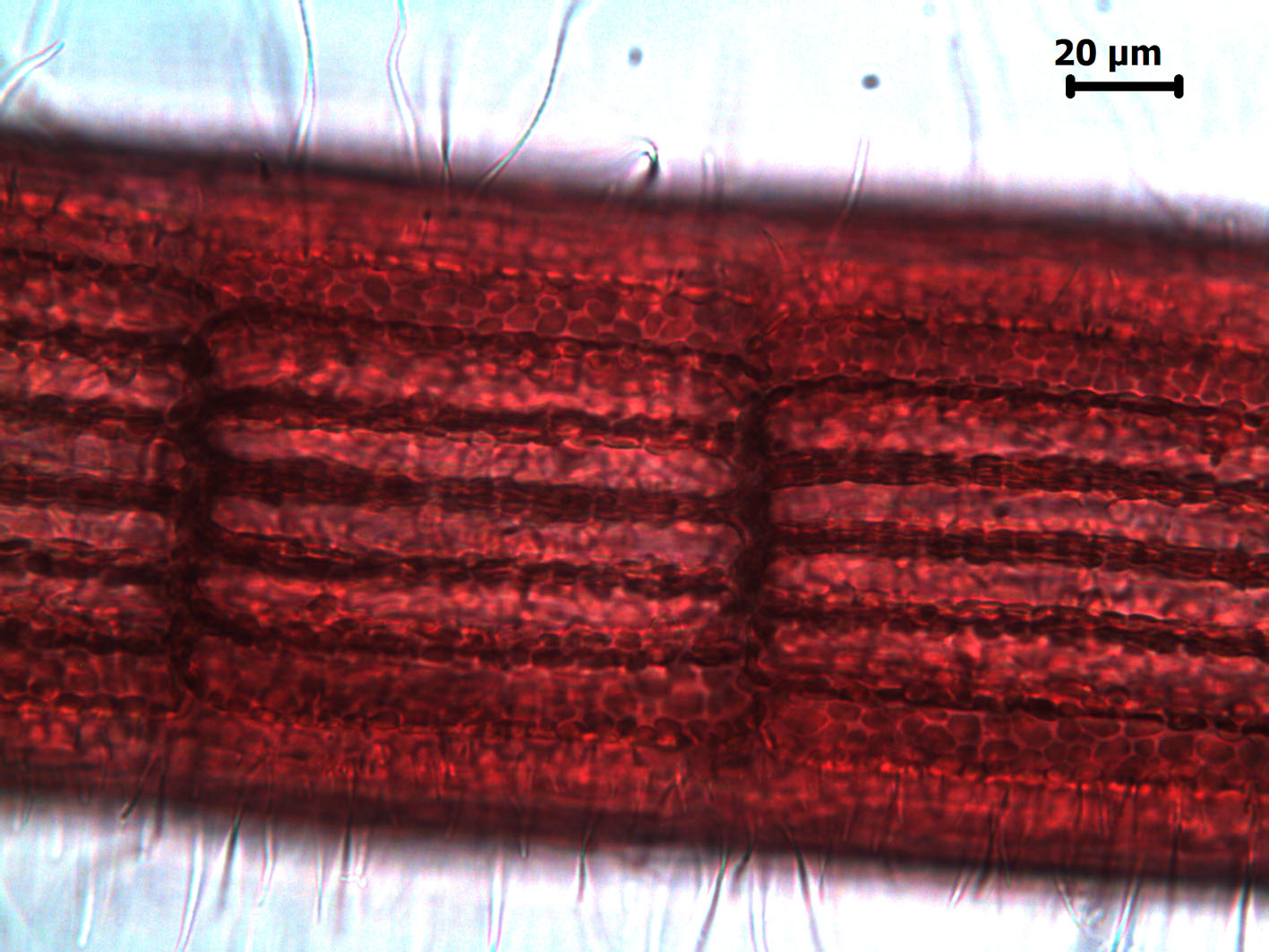
Ophidocladus simpliciusculus, cell detail, fresh specimen, Nature’s Valley.
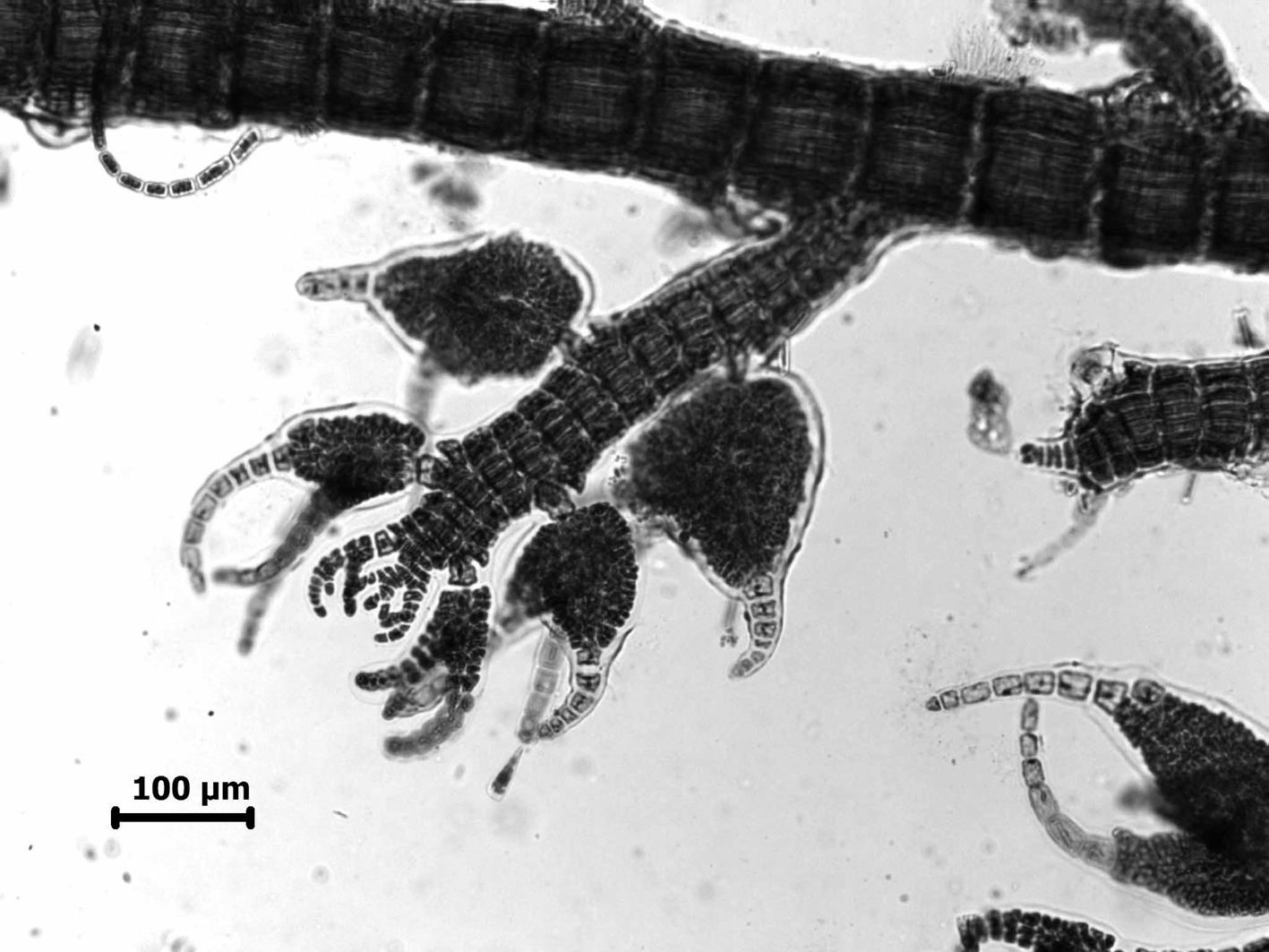
Ophidocladus simpliciusculus, male thallus: tri-lobed antheridial stands.
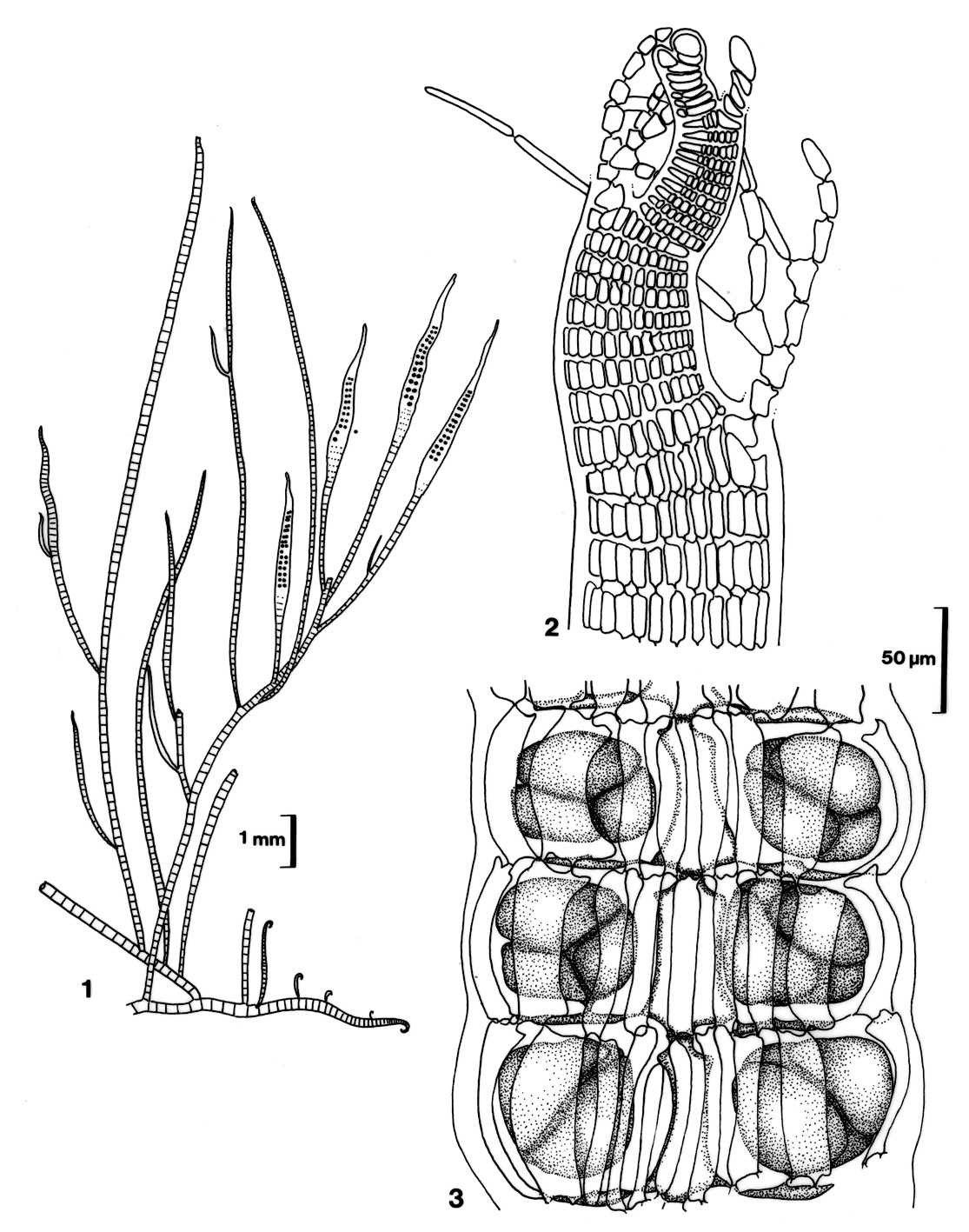
Ophidocladus simpliciusculus, 1. Habit, tetrasporangial plant. 2. Thallus apex. 3. Tetrasporangia. Reproduced from Stegenga et al. (1997).
References Ophidocladus
Guiry, M.D. & Guiry, G.M. 2011. AlgaeBase. World-wide electronic publication, National University of Ireland, Galway. http://www.algaebase.org; searched June 2011.
Rull Lluch, J. 2002. Marine benthic algae of Namibia. Scientia Marina 66 (Supplement 3): 258 pp.
Saenger, P.1971. On the occurrence of Ophidocladus (Rhodomelaceae) in southern Africa. Journal of South African Botany, 37: 291-304, figs 1-8.
Schmitz, F. & Falkenberg, P. 1897. Rhodomelaceae. In: Die natürlichen Pflanzenfamilien nebst ihren Gattungen und wichtigeren Arten insbesondere den Nutzpflanzen unter Mitwirkung zahlreicher hervorragender Fachgelehrten, Teil 1, Abteilung 2. (Engler, A. & Prantl, K. Eds), pp. 421-480. Leipzig: verlag von Wilhelm Engelmann.
Silva, P.C., Basson, P.W. & Moe, R.L. 1996. Catalogue of the benthic marine algae of the Indian Ocean. University of California Publications in Botany 79: 1-1259.
Stegenga, H., Bolton, J.J. & R. J. Anderson. 1997. Seaweeds of the South African west coast. Contributions from the Bolus Herbarium 18: 655 pp.
Cite this record as:
Anderson RJ, Stegenga H, Bolton JJ. 2016. Seaweeds of the South African South Coast.
World Wide Web electronic publication, University of Cape Town, http://southafrseaweeds.uct.ac.za; Accessed on 07 December 2025.